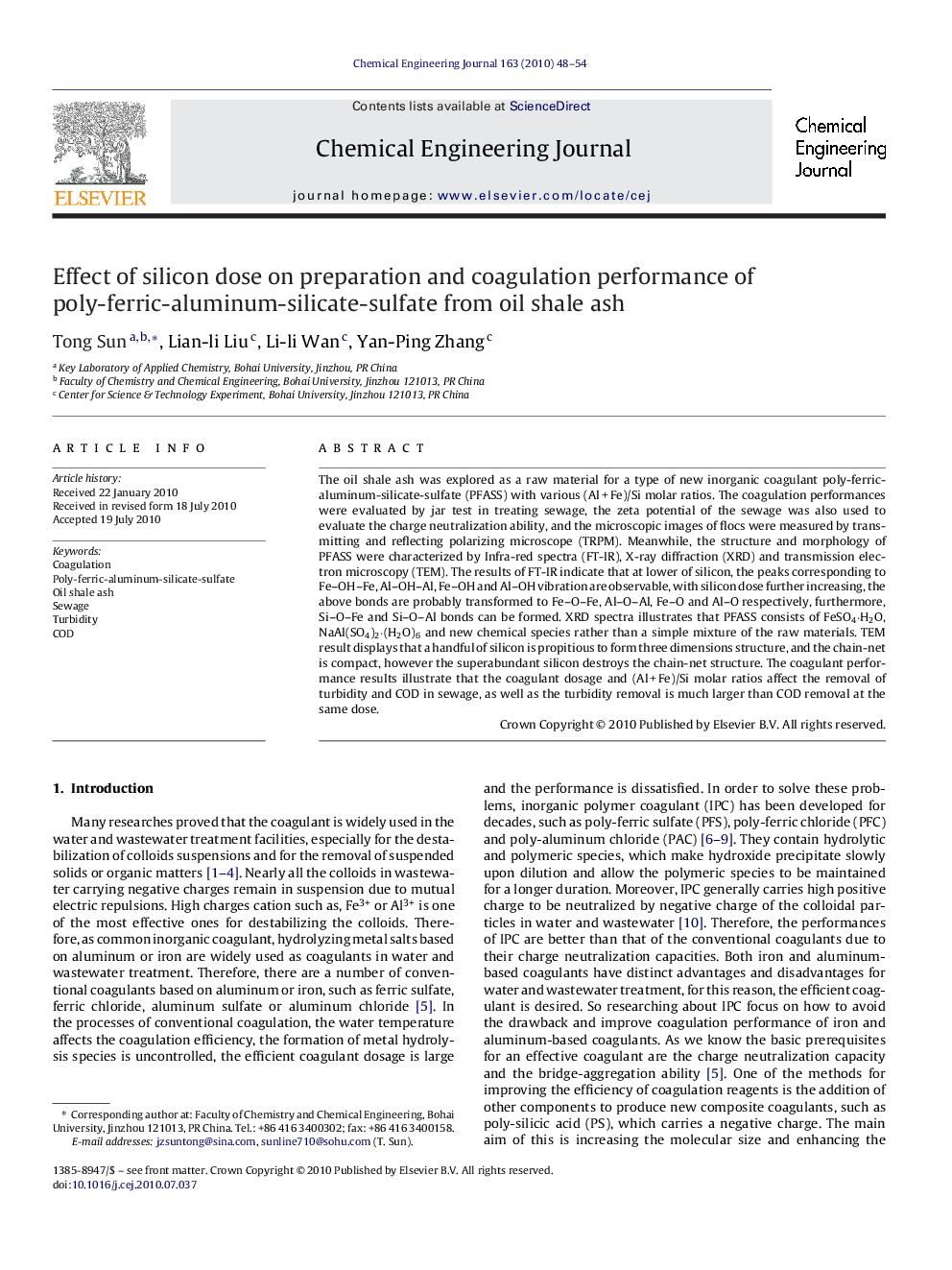| Article ID | Journal | Published Year | Pages | File Type |
|---|---|---|---|---|
| 152157 | Chemical Engineering Journal | 2010 | 7 Pages |
The oil shale ash was explored as a raw material for a type of new inorganic coagulant poly-ferric-aluminum-silicate-sulfate (PFASS) with various (Al + Fe)/Si molar ratios. The coagulation performances were evaluated by jar test in treating sewage, the zeta potential of the sewage was also used to evaluate the charge neutralization ability, and the microscopic images of flocs were measured by transmitting and reflecting polarizing microscope (TRPM). Meanwhile, the structure and morphology of PFASS were characterized by Infra-red spectra (FT-IR), X-ray diffraction (XRD) and transmission electron microscopy (TEM). The results of FT-IR indicate that at lower of silicon, the peaks corresponding to Fe–OH–Fe, Al–OH–Al, Fe–OH and Al–OH vibration are observable, with silicon dose further increasing, the above bonds are probably transformed to Fe–O–Fe, Al–O–Al, Fe–O and Al–O respectively, furthermore, Si–O–Fe and Si–O–Al bonds can be formed. XRD spectra illustrates that PFASS consists of FeSO4·H2O, NaAl(SO4)2·(H2O)6 and new chemical species rather than a simple mixture of the raw materials. TEM result displays that a handful of silicon is propitious to form three dimensions structure, and the chain-net is compact, however the superabundant silicon destroys the chain-net structure. The coagulant performance results illustrate that the coagulant dosage and (Al + Fe)/Si molar ratios affect the removal of turbidity and COD in sewage, as well as the turbidity removal is much larger than COD removal at the same dose.
